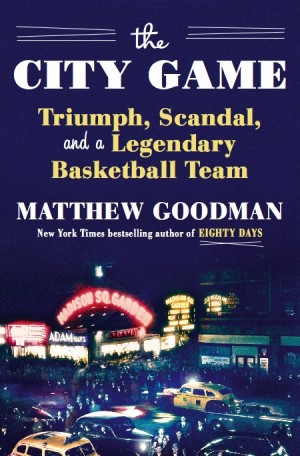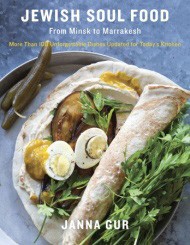I thought I’d never taste my late grandmother’s poppy seed cookies again. She made them by instinct. But then I saw the recipe for mohn kichel—poppy seed cookies— in Goodman’s new cookbook, a compilation of 170 Jewish dishes hailing from 21 countries. This recipe originated in Ukraine and was handed down at least three generations, the book says.
I had all the ingredients but not a “standing mixer,” which the instructions called for. My electric hand mixer will do just fine, I told myself as I placed a stick of softened butter and half-cup of sugar into a mixing bowl. What was I thinking? Almost immediately, the butter wedged itself inside the mixing blades, leaving most of the sugar behind. I spent the next 15 minutes extricating said butter with a spatula and my fingers. But I persevered, assigning my 11- year-old to hold the hand mixer as I slowly added the dry ingredients with one hand while rotating the bowl with the other. The dough rolled out beautifully, and we finally got to use our Chanukah shapes Jewish symbol cookie cutters. My first crunchy bite into a mohn kichel instantly transported me back to my grandmother’s kitchen. Next Chanukah, I’m asking for a standing mixer.
Jewish foodies everywhere are likely to find more than one recipe in Jewish Food that transports them to a kitchen long gone, no matter their country of origin. There’s torshi lift—pickled turnips — a popular appetizer among Syrian and Egyptian Jews; machli cha kanji (Bombay curried salmon), fasoulia (Greek white bean and vegetable stew), Hungarian red cabbage with apples, gozinakhi (Georgian honey-nut clusters), and a Mexican blintz dish made with vegetables and roasted poblanos. Goodman introduces many recipes with fascinating anecdotes. The blintzes, for example, came from a Jewish immigrant from Lithuania who, in the 1930’s, traded her possessions for a diamond, hid it in her hair, and boarded a ship bound for Mexico.
Those looking for familiar Jewish dishes, such as chopped liver, kugels, challah, latkes, brisket and kreplach, won’t be disappointed. The occasional hard-to-find ingredient notwithstanding, most of the recipes are non-intimidating. There are also numerous essays focusing on a particular Jewish community, such as Spain; dish; or ingredient, such as pomegranates. Goodman— food columnist at The Forward and a correspondent for the public radio show “The Splendid Table” — integrates food science information as well as nuances of kashrut laws in several of his essays.
Jewish Food celebrates the ingenuity of Jews who infused their culinary traditions with the finest flavors of the cultures they lived in.





